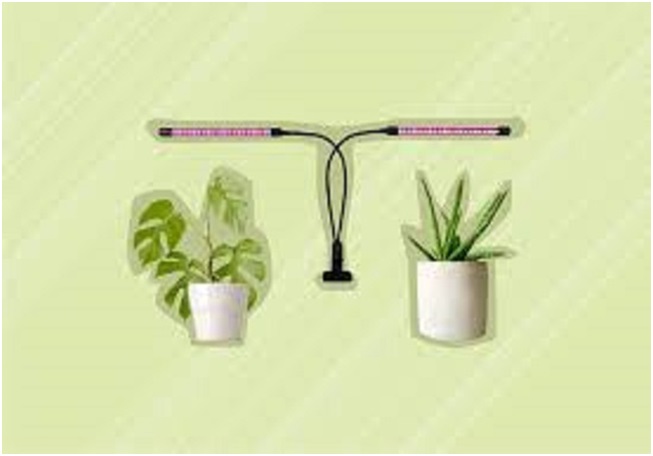How to Pick the Best LED Light for Indoor Plant Growth

All in all, you need to understand what the best-LED development lights are. Indeed, that relies upon many elements. This guide will assist you with understanding the universe of LED development lights and increment your insight before you purchase that great light(s) for your valuable development. Blissful developing!
Low light versus High light circumstances
Do the plants require full sun or low-light circumstances? Dimmable LED lights might be the best approach for changing the Photosynthetic active radiation (PAR) radiating from your apparatus. Dimmable LEDs (for example, California Lightworks, Cirrus LED, Lifted LED, Kind LED) permit you to differ the light result without changing the level of the light and help you to diminish the lights down for Veg and increment the light power for Flower, or to emulate seasonal light changes that a few plants require. Save 30% off on your order by using the Marshydro Coupon Code.
Vegging as opposed to Flowering
Is it safe to say that you are vegging, blooming, or both? There are LED lights for development planned explicitly for vegging your plants (blue moving lights) and LEDs for blossoming your plants (red range lights). Commonly, most LED develop lights. Light apparatuses with these particular ranges may likewise be utilized notwithstanding full range LED grow lights or different developing lighting to give an additional lift during Veg and blossom periods of your development. G8LED offers a red promoter for that additional blossoming support.
Usually, most LED develop lights give a full range and can be utilized for the whole cycle from seed to reap.
Development Spectrum
Red and blue lights are urgent.
If you might want to develop from seedling to bloom, a full-cycle LED development light is suggested. A full-cycle grow light will give your plants the blue and red necessary frequencies for ideal development. Blue light mirrors the drawn-out day and summer sun and energizes vegetative leaf development (MH, or Metal Halide, lights additionally give this capability). While picking a LED to develop a light guarantee, the unit remembers blue lights for the scope of 440-470nm. Red light is likewise significant in plant development and essential for photosynthesis. Red light replaces the short day, pre-winter sun.
UV is a supercharger.
Notwithstanding red and blue diodes, you might consider a light that contains UV frequencies. UV light enacts the plant’s guard systems and influences plant advancement, development, and digestion. UV frequencies can likewise build THC. Pick LED develop lights with diodes in the 315-400nm territory (380nm is average.) UVA is a typical LED frequency utilized in grow lights. UVB is more costly and isn’t seen repeatedly in LED development lights. Cirrus LED has a bar light that contains UV-B diodes (underneath).
White light
Some LED development lights are planned with white LEDs like the NextLight Mega LED Grow Light (beneath), Pro MAX Grow lights, and Amare. They utilize white chip-on-board (COB) LEDs with other frequency diodes to finish the range from deep blues to IR (and UV with the SolarEclipse SE450 develop light). Quality white LEDs, adapted to the correct frequencies and temperatures, give full-range white light from deep blues to far reds but typically miss UV and IR. Ensure that the shade of the LEDs (in Kelvins) is in a mid-temperature range. 4000K is a well-adjusted variety that will give the blues the need to develop and the reds expected to blossom. NextLight, Pro MAX Grow, and Amare LED apparatuses have been displayed to create from seed to thrive with fantastic blooming results.
The best-LED ranges for plant development
In rundown, the best lights for developing indoor plants will incorporate red and blue LEDs (at the correct frequencies) or a full-range white light. UV diodes might be included to improve a plant’s physiological capabilities; however, these are unnecessary. A 6:1 or 5:1 proportion of red to blue is excellent for supporting yields; however, it can make extended plants during Veg and lessen blossom quality. A red to blue ratio of 2:1 or 1:1 is perfect for keeping heavy and expanding tar creation. Individual outcomes will differ given cultivator experience, strain, supplements, climate, etc. Before you buy an LED develop light, take a gander at the ghostly bend to guarantee it is what you and your plants want.
A genuine illustration of an incredible range: Black Dog LED PhytoMAX-2 series
Inclusion Area
Light size
The development light you pick should rely upon the area you need to cover. A little 100-watt light might cover under four sq ft, while a vast 400-watt light can cover around 12 sq ft. A few cultivators suggest buying a more significant light since it is less expensive (watt for watt). They can constantly ease the morning off from the plants on the off chance that the light radiation is excessively extreme. This will likewise lessen the PAR that arrives at your plant, so it may not be significant. Dimmable LED development lights might be profitable since the powers can be dialed down.
Pillar Angle
A more considerable light will cover a more extensive region with more even and extraordinary inclusion than a more modest light that spreads the light over a more significant distance. For more modest developments, buy a few lower controlled installations rather than less powerful apparatuses for the evenest inclusion on your plants.
Notwithstanding the size of the LED develop light, the shaft (or focal point) point matters as well. A little point (30 degrees) diminishes the inclusion region. However, it conveys more PAR to your plants. A significant point (65 degrees) grows the general light impression however reduces the light thickness related to the plants.